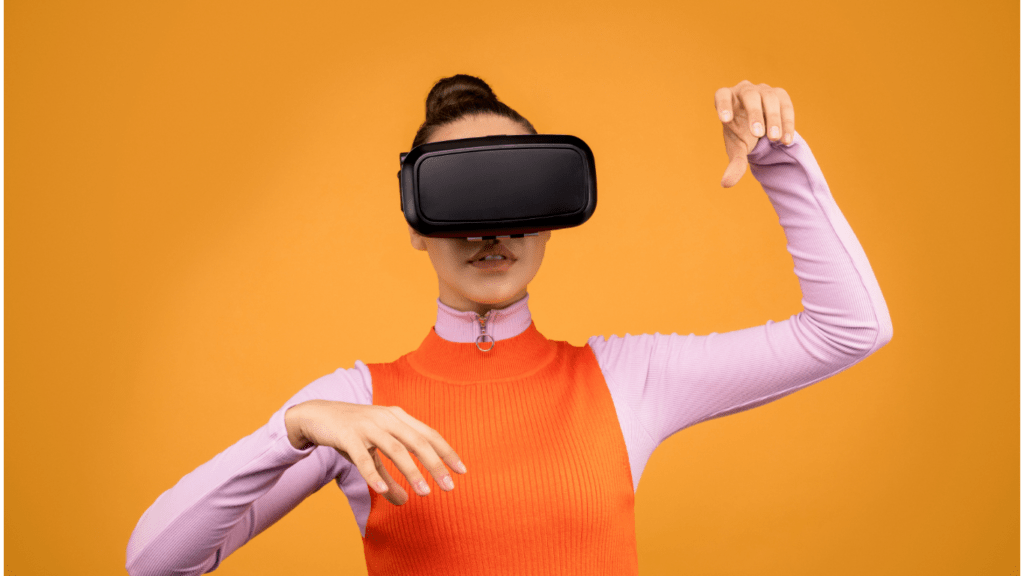The Evolution of Wearable Technology in Performance Art
Wearable technology has significantly impacted performance art. This evolution showcases how advancements have reshaped artistic expression.
Historical Overview
In the late 20th century, performers began integrating basic electronic devices into their costumes. Pioneers like Laurie Anderson used voice modulators in the 1980s to alter their vocal performances.
Early wearable devices, such as:
- microphones
- transmitter packs
became common, allowing for greater mobility on stage.
By the 1990s, artists started exploring the use of sensors and interactive elements. Stelarc, an Australian performance artist, exemplified this trend by using medical-grade devices to manipulate his body, emphasizing the intersection of human and machine.
Technological Milestones
The 21st century saw exponential growth in wearable technology, revolutionizing performance art. In 2010, the introduction of LED costumes allowed artists to integrate visual effects directly into their outfits.
Groups like “Waking Dream” and “iLuminate” gained fame for their illuminated performances, which used programmable LEDs to create stunning visual spectacles.
In the mid-2010s, advancements in motion capture and interactive fabrics further expanded possibilities. Dancers equipped with motion sensors could now create performances where movements triggered corresponding digital effects in real-time.
By 2020, wearable tech in performance art included augmented reality (AR) and virtual reality (VR) elements. These technologies enabled artists to blend physical and virtual worlds, offering audiences immersive experiences.
For example, Japanese artist Daito Manabe used AR gear to project digital animations on stage, synchronized with live movements.
Wearable technology continues to advance, pushing boundaries and expanding the scope of what performance art can achieve.
Key Benefits of Wearable Technology in Performance Art

Wearable technology offers unique advantages in performance art. It enhances the creative process and expands audience engagement.
Enhancing the Creative Process
Wearable technology empowers artists. It lets me integrate diverse sensory and interactive elements into performances, fostering innovation. Using devices like sensors and smart textiles, I can create responsive costumes that react to motion or sound. These features enable me to transform conventional acts into immersive experiences. Light-emitting diode (LED) costumes, for example, change colors based on movement, delivering dynamic visual effects.
Expanding Audience Engagement
Audience perception is vital in performance art. Wearable technology lets me bridge the gap between performers and viewers. By incorporating augmented reality (AR) and virtual reality (VR) elements, I can offer audiences immersive experiences that go beyond traditional stage boundaries.
Devices like AR glasses or VR headsets synchronize digital animations with live movements, ensuring that spectators feel deeply connected to the performance. Interactive fabrics and motion capture also enable live feedback, allowing the audience to influence aspects of the performance, thereby increasing engagement and participation.
Wearable technology melds creativity and interaction in performance art. It enriches both the process and audience involvement, setting new standards in artistic expression.
Challenges and Considerations
Wearable technology in performance art presents unique challenges and considerations. These aspects affect how artists design and execute their works.
Technical Limitations
Technical limitations pose significant hurdles. Battery life is a critical issue; performances that extend beyond a few hours struggle with power concerns.
Sensors, such as motion capture devices, can experience latency, affecting real-time responsiveness. Additionally, compatibility with existing performance infrastructure often requires custom solutions, adding layers of complexity. Managing these aspects ensures the technology enhances, rather than detracts from, artistic expression.
Ethical Concerns
Ethical concerns shape the use of wearable technology in performance art. Data privacy is paramount, especially with devices capturing biometric or location data from performers and audiences.
Artists must ensure transparent data usage policies to maintain trust. Moreover, the environmental impact of electronic devices, often with short lifespans, raises sustainability questions. Addressing such concerns responsibly is essential for the ethical integration of technology in art.
Case Studies of Wearable Technology in Performance Art
Numerous performances have integrated wearable technology, pushing the boundaries of both art and tech. These case studies highlight how wearable tech has transformed performance art.
Notable Performances
- Stelarc’s “Exoskeleton” and “Ping Body”
Stelarc, an Australian performance artist, has extensively used wearable technology. His “Exoskeleton” features a six-legged walking machine controlled by body movements. In “Ping Body,” electrodes connected to Stelarc’s muscles allowed internet users to control the performance, merging physical and digital realms.
- YOLO: AI-driven Performance by Skye’s The Limit
The theater group Skye’s The Limit created “YOLO,” an AI-driven performance where actors wore motion capture suits. These suits tracked movements, which were then interpreted in real-time by AI to generate projected imagery and sounds, creating an immersive environment.
- Mi.Mu Gloves in Imogen Heap’s Performances
Musician Imogen Heap introduced Mi.Mu gloves, enabling her to control sounds and effects through gestures. These gloves have sensors that capture hand movements, translating them into musical elements, showcasing technology’s role in live music production.
Impact Analysis
Wearable technology has fundamentally changed performance art. Artists benefit from greater creative freedom, enabling more interactive and engaging performances. Audiences experience enhanced immersion, bridging the gap between performer and spectator, thanks to augmented reality (AR) and virtual reality (VR).
A key impact has been the dynamic interaction between humans and machines. Stelarc’s works, for example, embody this by letting remote users influence live performances. Mi.Mu gloves allow artists like Heap to explore new musical dimensions. These elements highlight technology’s potential to expand artistic expression.
However, challenges remain. Battery life can limit performance duration, and latency issues may disrupt real-time interactions. Ethical concerns around data privacy and environmental sustainability need addressing to ensure responsible technology use. Overcoming these obstacles will be crucial for the continued integration of wearable tech in performance art.
Future Prospects
Wearable technology continues to evolve, offering new possibilities for performance art. Innovations like flexible electronics and biofeedback promise to enhance artistic expression.
Emerging Technologies
Flexible electronics, such as bendable displays and circuits, integrate seamlessly into costumes, providing dynamic visual effects. Biofeedback devices, which monitor physiological responses (e.g., heart rate, muscle tension), create interactive performances responding to artists’ internal states.
Smart fabrics embedded with sensors capture and transmit data, allowing real-time adjustments. Augmented reality (AR) and virtual reality (VR) will likely merge with wearables, creating fully immersive experiences.
Potential Collaborations
Collaborations between performance artists and tech industries could drive innovation. Artists partnering with software developers can create custom applications enhancing performances. Working with fashion designers skilled in smart fabrics can produce visually stunning and functional costumes.
Joint projects with AI researchers can develop intelligent systems that adapt and learn from live performances. Partnering with bioengineers can lead to the creation of more sophisticated biofeedback devices, further blurring the lines between technology and human performance.

 Anna Freehill, a key contributor to Avant Garde Artistry Hub, plays a vital role in shaping the platform’s vision. As an author and collaborator, she helps bridge the worlds of art and technology, offering insightful articles that guide artists through the rapidly evolving creative landscape. Anna’s dedication to highlighting art's therapeutic value has contributed to the platform’s focus on mental and emotional well-being through creative expression.
Her involvement in building Avant Garde Artistry Hub has been instrumental in providing valuable resources to artists seeking to enhance their careers. Whether through her writing on business strategies or her support in platform development, Anna is committed to fostering a space where artists can thrive and embrace the future of art.
Anna Freehill, a key contributor to Avant Garde Artistry Hub, plays a vital role in shaping the platform’s vision. As an author and collaborator, she helps bridge the worlds of art and technology, offering insightful articles that guide artists through the rapidly evolving creative landscape. Anna’s dedication to highlighting art's therapeutic value has contributed to the platform’s focus on mental and emotional well-being through creative expression.
Her involvement in building Avant Garde Artistry Hub has been instrumental in providing valuable resources to artists seeking to enhance their careers. Whether through her writing on business strategies or her support in platform development, Anna is committed to fostering a space where artists can thrive and embrace the future of art.